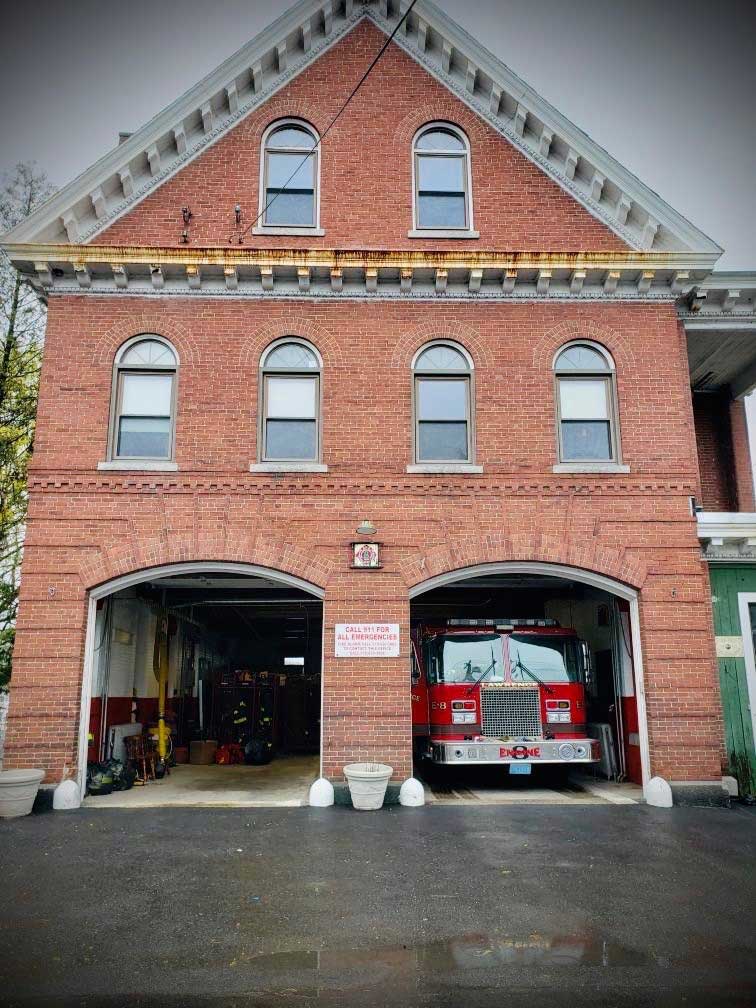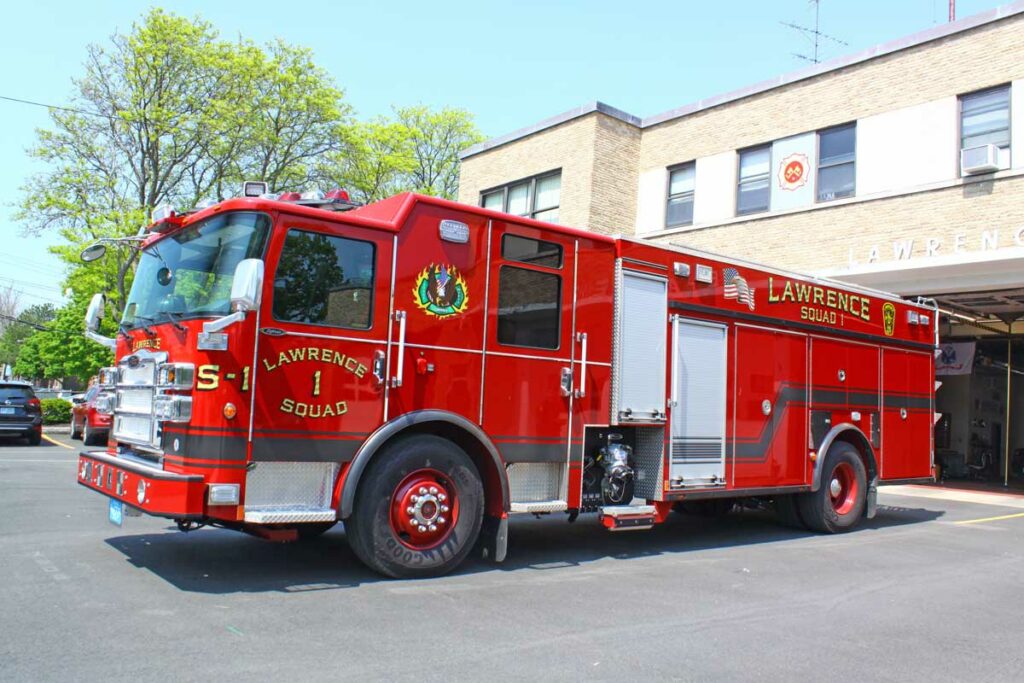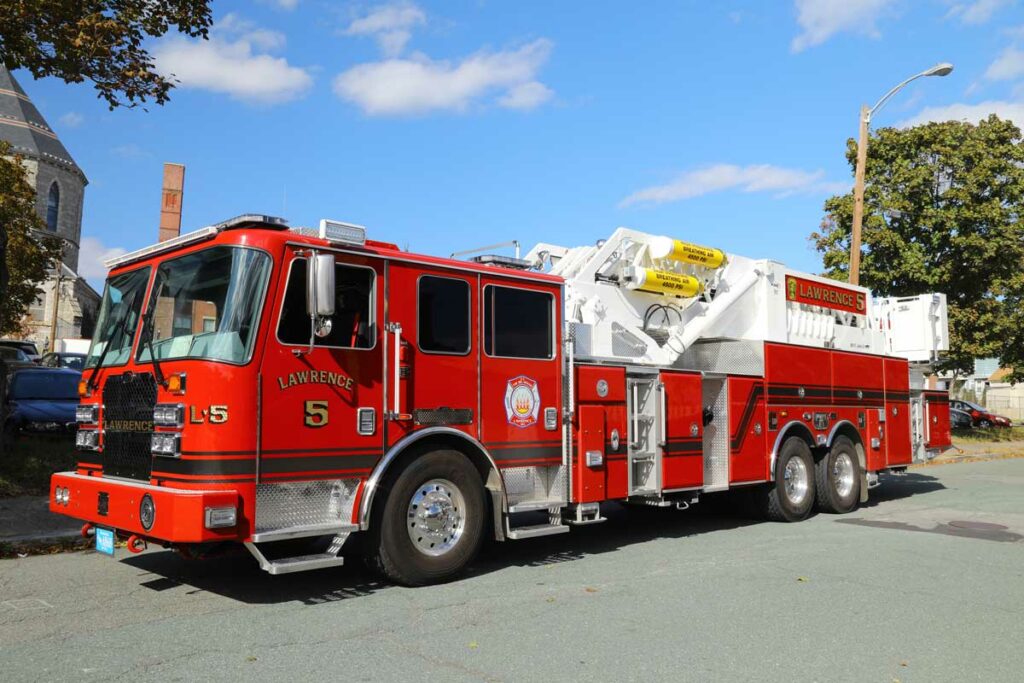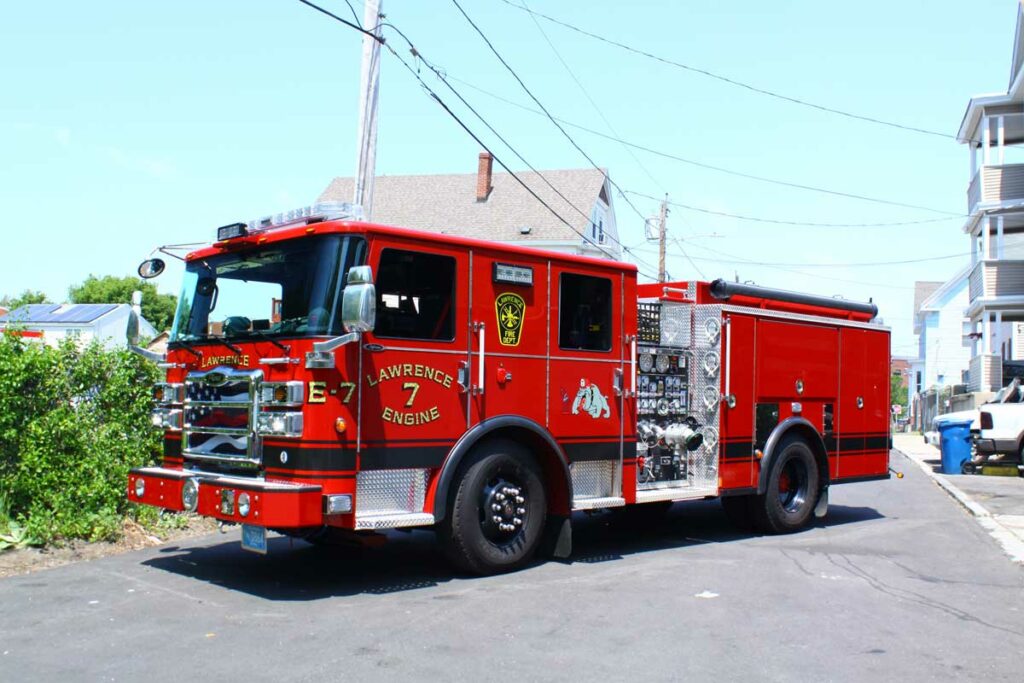
By Jim Regan
The city of Lawrence, Massachusetts, was originally incorporated as a town in 1847. Its 6.75-square-mile area was carved out of the towns of Methuen and Andover. Lawrence was a planned ideal industrial community and was the idea of several industrialists from Boston. The goal was to build a city around textile mills that would harness the waterpower of the Merrimack River, which runs through the center of the city. The Great Stone Dam was begun in 1845 and completed in 1848 using primarily Irish immigrant labor. The dam funneled water down two canals that provided waterpower to the numerous mills.
The Lawrence (MA) Fire Department (LFD) was established as a volunteer organization in 1847.
The department grew as the city grew. The population in the early part of the 1900s approached 80,000. The LFD was fully motorized in 1922-1923. The tax base was primarily dependent on the textile mills including the American Woolen Company, which owned the Wood Mill, the largest textile mill in the country. As textiles declined during the ‘40s and ‘50s, so did the fortunes of the city and the LFD.
At its height, the LFD employed slightly more than 200 members manning eight pumpers, three ladders, one light rescue, two ambulances, and a deputy chief and chief with aides. Beginning in the 1970s and carrying through the ‘90s, four engines, one ladder, the ambulances, and aides were eliminated at different times. Four stations were closed.
Apparatus purchases were sparse but Chief Richard Shafer was successful in replacing equipment and buying a quint during the ‘90s.
The Merrimack Valley Gas Crisis: ‘The Day That Wouldn’t End’
Coincidentally, Lawrence was gripped by an epidemic of arson fires at this time that garnered national attention. In addition, staffing was dramatically reduced by 35 percent during 1992-1993. This included demotions that destroyed firefighters’ morale. After the turn of this century, the last equipment purchased was a pumper and heavy rescue in 2005; thankfully, the arson fires declined due to the intervention of an arson task force including Lawrence police, the LFD, Federal ATF, and the Massachusetts State Police.
The population had dropped into the 60,000 range and a large influx of immigrants was underway.
Deputy Chief Brian Moriarty of the downriver Haverhill Fire Department was appointed chief on March 22, 2015, inheriting a department with old equipment, low morale, and a bleak future. Moriarty began his fire service career in the U.S. Air Force in 1980, becoming a paramedic. He started in Haverhill on April 12, 1987, and simultaneously began a paramedic career in Lawrence. This gave him a different perspective of the LFD than most outsiders. He knew personally and took care of many of the department members over the next 29 years.
With the assistance of then Mayor Daniel Rivera, Moriarty hit the ground running by reopening Engine 9’s quarters in South Lawrence East on November 30, 2015. He also began an aggressive apparatus replacement program, buying 1,500-gpm pumpers in 2016 and 2017; a 100-foot mid-mount tower ladder in 2017; a rescue pumper and a 1,500-gpm pumper in 2020; and finally another 1,500-gpm pumper delivered for Engine Company 6 this year. Basically, this replaced the entire fleet. Additional major accomplishments include:
- Reopening Engine Company 8 on Tower Hill, which had been closed for years. This was accomplished by moving Engine 5 to Tower Hill and renaming it as Engine 8. A new Engine/Squad was opened at the Central Fire Station with a new piece of apparatus. This rig included many of the necessary rescue tools formerly carried on the rescue company. Rescue 1’s staffing was transferred to the new “Squad 1” replacing Engine 5. This reduced response time dramatically to Tower Hill, one of several major hills in Lawrence. The firehouse was rehabbed top to bottom.
- Increased staffing from 117 to 124 firefighters. This was accomplished by retaining the seven firefighters who were hired with a SAFER grant. Chief Moriarty explained to the mayor that retaining these seven members would dramatically reduce overtime and the mayor supported the plan.
- Changed the 10-alarm citywide running card to provide for greater response on multiple alarms. The card now calls for three engines and one ladder on each alarm. The prior card called for only a single piece of apparatus on every alarm. This provided for increased resources and had mutual aid moving earlier into the city. Response time was reduced and relationships with neighboring communities improved.
- Replaced the entire inventory of self-contained breathing apparatus.
- Obtained a new air compressor at the Central Fire Station, which now housed Squad 1, Tower Ladder 5, and the on-duty deputy chief.
- Provided an emergency generator in each station.
- Obtained a gear extractor in each station.
- Obtained new extrication devices on two ladders and the squad.
- Obtained new jacks and air bags on Squad 1.
- Obtained lightweight portable attack nozzles on all pumpers, fed by new 3-inch hose.
- Replaced all 4-inch hose with 5-inch hose and also provided hydrant assist valves for all pumpers.
- Added smooth bore nozzles to all engine companies, to give officers and firefighters more options on the fireground
- Provided Narcan for all members with the ability to use both on and off duty. The opioid crisis has hit Lawrence very hard.
- Has a fire captain in charge of inspectional services, thereby increasing inspection and cooperation between inspectional services and the fire prevention bureau.
- Improved the ISO grade for the city from Class 3 to Class 2. Work is progressing on achieving on Class 1.
- The fire department has worked very closely with the city water department and has all hydrants flow tested. Hydrant caps and bonnets have been painted to comply with NFPA recommendations.
- Many of the firehouses were neglected for years and in need of major repairs. The biggest issue was at the Central Fire Station, which was built in 1967 and also houses headquarters. The apparatus floor over a basement had deteriorated and was condemned and equipment had to be moved. The floor was supported with staging and the top four inches removed and repoured and coated. This project resulted in a basically new, aesthetically pleasing floor at a cost of more than one million dollars.
Many of these improvements were in place during the 2018 natural gas over pressurization event in South Lawrence and neighboring suburbs. This resulted in numerous simultaneous fires in Lawrence, Andover, and North Andover. One house exploded, resulting in the death of one person. This event led to the purchase of additional equipment including CGIs, two UTVs with skid loads, radios, and a communications vehicle. As a result of the catastrophe, a new gas distributor was brought into the city and better communication is in place regarding grade 1 gas leaks and other gas repairs.
All four front line engines, the squad, and Tower Ladder 5 are five years old or newer. A future project is to replace the 2012 ladder truck in South Lawrence west with a quint. This is the only fire station that does not have water and pumping capability.
The department is also investigating new software for NFIRS report writing that would track all aspects of department operations with one system; this technology would do it all, saving money and simplifying record keeping.
Improving the city’s ISO grade to Class 1 is the department’s goal. With the many improvements in apparatus, training, documentation, and water supply, it is hoped that this goal will be achieved during the next evaluation.
Lawrence has been recognized in recent years as the poorest city in Massachusetts. The population has been on the rise, estimated at close 82,000 in 2019. This population is all crammed into the same original 6.75-square miles as when the town was established 174 years ago. Credit goes to the officers and members of the LFD and Chief Moriarty for accomplishing so much on many fronts in a very short period of time.
Jim Regan grew up Lawrence and retired as a fire protection engineer and insurance executive after a 50-year career. He is an unofficial historian of the Lawrence Fire Department and was 20-year member of the Western Springs (IL) Fire Department. Lawrence will always be home.





